
JOURNAL OF CAVE AND KARST STUDIES
Scope & Guideline
Advancing Research in Unique Ecosystems
Introduction
Aims and Scopes
- Geological and Morphological Studies:
Research examining the formation, structure, and mineralogy of caves, including the processes that shape these underground environments. - Biodiversity and Ecology:
Investigations into the unique flora and fauna inhabiting cave systems, including studies on species diversity, ecological interactions, and adaptations to subterranean life. - Environmental and Climate Research:
Studies assessing the impact of environmental changes, including climate change, on cave ecosystems and their inhabitants. - Hydrology and Water Management:
Research on the hydrological processes affecting karst landscapes, including groundwater dynamics and land-use impacts on cave systems. - Conservation and Management Issues:
Discussions and analyses of conservation strategies for protecting cave environments and the biodiversity they support.
Trending and Emerging
- Climate Change Impacts:
A growing number of studies are addressing the effects of climate change on cave ecosystems, highlighting the vulnerability of these environments and their inhabitants. - Microbial Ecology and Extremophiles:
Research on microbial communities within caves, particularly extremophiles, is gaining prominence, emphasizing the unique adaptations and biodiversity found in these extreme environments. - Advanced Imaging and Analytical Techniques:
The use of high-resolution imaging techniques, such as X-ray computed tomography, is emerging as a critical tool in the study of cave formations and paleo-environmental reconstructions. - Hydrological Modeling:
There is an increasing focus on hydrological modeling within karst terrains, reflecting the need to understand water movement and its implications for both ecology and management. - New Species Descriptions:
The identification and description of new species, particularly in remote or less-studied cave systems, is becoming a significant trend, highlighting the importance of biodiversity research in karst environments.
Declining or Waning
- Historical Archaeology of Caves:
Research focusing on the archaeological significance of caves has become less frequent, possibly due to a shift towards more ecological and environmental studies. - Traditional Geological Mapping Techniques:
There has been a noticeable decline in papers utilizing conventional geological mapping methods, as newer technologies and methodologies gain traction. - Tourism Impact Studies:
While tourism impacts on caves were once a prominent theme, recent publications indicate a decrease in this focus, suggesting a potential shift toward more pressing ecological concerns.
Similar Journals

Neotropical Biology and Conservation
Preserving Biodiversity, One Study at a TimeNeotropical Biology and Conservation, published by Pensoft Publishers, serves as a pivotal platform for researchers and professionals dedicated to the understanding and preservation of biodiversity in the Neotropical region. This Open Access journal, operational since 2006 and based in Brazil, invites contributions that delve into the complexities of ecology, evolution, and conservation strategies pertinent to the diverse ecosystems of South and Central America. With a commendable 2023 impact factor reflected in its Q3 rankings across multiple categories including Animal Science, Ecology, and Plant Science, it stands as a valuable resource for academics seeking to publish innovative findings and foster dialogue in these critical areas of study. The journal's commitment to open access ensures that knowledge is readily available to anyone interested in advancing the field of neotropical biology and conservation. Join the global conversation and contribute to the vital work of preserving our planet’s rich biological heritage through rigorous research published in this esteemed journal.
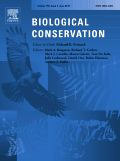
BIOLOGICAL CONSERVATION
Advancing Knowledge to Protect Our Planet's Biodiversity.BIOLOGICAL CONSERVATION, published by Elsevier Science Ltd, is a leading international journal dedicated to advancing the science and practice of biological conservation. Since its inception in 1968, the journal has provided a critical platform for researchers, professionals, and students in the fields of Ecology, Evolution, Behavior, and Systematics as well as Nature and Landscape Conservation. With an impressive impact factor, and ranked in the Q1 category within both ecological and conservation domains in 2023, it emphasizes high-quality empirical and theoretical research essential for understanding and addressing pressing environmental challenges. Although it follows a subscription model, the journal is known for its rigorous peer-reviewed articles that contribute significantly to the field, ensuring that the latest findings and methodologies are readily accessible to practitioners. As a vital resource for those engaged in conservation efforts globally, BIOLOGICAL CONSERVATION stands out for its commitment to enhancing knowledge and informing strategies that safeguard biodiversity across ecosystems.

ACTA CARSOLOGICA
Innovating Insights into Karst EnvironmentsACTA CARSOLOGICA is an esteemed open-access journal published by the KARST RESEARCH INSTITUTE ZRC SAZU in Slovenia, dedicated to advancing knowledge in the field of Earth-Surface Processes. Since its inception in 1981, and with an open-access model adopted in 2012, this journal has provided a vital platform for researchers to disseminate their findings and engage with the global scientific community. With an impact factor reflecting its scholarly contribution and a placement in the Q3 quartile of its category as of 2023, ACTA CARSOLOGICA is positioned among notable journals in Earth and Planetary Sciences. The journal plays a crucial role in facilitating discussions on karst and related environments, making it an essential resource for academics, professionals, and students interested in environmental processes and geosciences. Its comprehensive coverage of converged topics and ongoing research developments underscores its significance in promoting scientific inquiry and fostering academic collaboration.

Alpine Botany
Elevating Studies of High-Altitude Plant Life.Alpine Botany is a premier scholarly journal published by SPRINGER BASEL AG, dedicated to the field of ecological and botanical research with a specific focus on alpine environments. With an ISSN of 1664-2201 and an E-ISSN of 1664-221X, this journal has established itself as a significant platform for disseminating high-quality research findings, with its latest category rankings placing it in the Q1 quartile for both Ecology, Evolution, Behavior and Systematics as well as Plant Science. Originating from Switzerland, Alpine Botany benefits from its geographical context, fostering a rich exchange of ideas and research advancements relevant to high-altitude flora. The journal operates under an Open Access model, promoting widespread accessibility of its content while accommodating an increasing demand for interdisciplinary studies within the ecological and botanical communities. With a commitment to excellence, Alpine Botany continues to serve as an invaluable resource for researchers, professionals, and students who are keen to explore and understand the complexities of alpine ecosystems.

WETLANDS
Uncovering the Secrets of Nature's Water FiltersWETLANDS is a prestigious academic journal dedicated to advancing the understanding of wetland ecosystems, published by SPRINGER and based in the Netherlands. Established in 1981, this journal has consistently offered high-quality research on ecological dynamics, environmental chemistry, and broader environmental science topics, as indicated by its notable rankings in the 2023 category quartiles: Q2 in Ecology and Environmental Science (miscellaneous) and Q3 in Environmental Chemistry. The journal impacts the scientific community significantly, as reflected in its Scopus rankings, which place it within the top percentiles of its field. This makes WETLANDS an essential resource for researchers, professionals, and students aiming to stay at the forefront of wetland research and conservation efforts. With continual contributions from experts worldwide, it not only disseminates critical findings but also fosters collaboration and innovation within this vital area of environmental science.
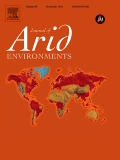
Journal of Arid Environments
Transforming Understanding of Dry EcosystemsJournal of Arid Environments, published by Academic Press Ltd - Elsevier Science Ltd, is a leading interdisciplinary journal dedicated to advancing the understanding of arid and semi-arid ecosystems globally. With an impressive impact factor and esteemed Q1 rankings in categories such as Earth-Surface Processes and Ecology, this journal serves as a pivotal platform for researchers, professionals, and students alike to disseminate high-quality, impactful research. Since its inception in 1980, the journal has been at the forefront of exploring critical topics ranging from ecological dynamics to environmental challenges in arid regions. As it continues to publish until 2024, the Journal of Arid Environments offers valuable insights and extensive access to high-caliber research that is essential for anyone interested in the ecological and environmental aspects of arid landscapes.
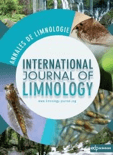
ANNALES DE LIMNOLOGIE-INTERNATIONAL JOURNAL OF LIMNOLOGY
Championing Open Access to Aquatic ResearchANNALES DE LIMNOLOGIE-INTERNATIONAL JOURNAL OF LIMNOLOGY is a distinguished scientific journal dedicated to the field of limnology, focusing on freshwater ecosystems and their ecological dynamics. Published by EDP SCIENCES S A, this journal has been a vital resource for researchers and professionals since 1965, fostering a deep understanding of aquatic environments through quality research and scholarly discussions. The journal was indexed in Scopus, where it ranked in the 37th percentile within the Agricultural and Biological Sciences category, emphasizing its contribution to aquatic science. While its coverage has been discontinued in Scopus since 2021, the journal continues to engage its readership with critical insights and reviews in limnology. ANNALES DE LIMNOLOGIE promotes open access to facilitate the dissemination of valuable knowledge, making it an essential platform for students, researchers, and professionals who strive to advance our understanding of freshwater systems.
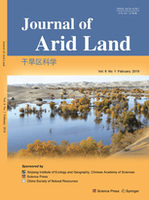
Journal of Arid Land
Bridging research and practice in water science and policy.Journal of Arid Land, published by SPRINGER HEIDELBERG, is a pivotal platform dedicated to advancing knowledge in the fields of Earth-Surface Processes, Management, Monitoring, Policy and Law, and Water Science and Technology. With an ISSN of 1674-6767 and an E-ISSN of 2194-7783, this journal stands out as a prominent source of scholarly research focusing on the unique challenges and opportunities of arid and semi-arid environments, particularly relevant in the context of global climate change. As of 2023, it holds a commendable Q2 ranking in several critical categories, underscoring its impact in environmental science and related disciplines. The journal, which has been in publication since 2009 and is set to continue through 2024, provides unrestricted access to high-quality research that sheds light on sustainable practices and effective policies. With its focus on arid lands, the Journal of Arid Land plays an essential role in fostering interdisciplinary dialogue among researchers, practitioners, and policymakers striving to address the pressing issues faced by these ecosystems.
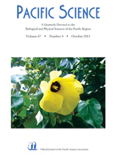
PACIFIC SCIENCE
Advancing Multidisciplinary Insights from the PacificPACIFIC SCIENCE is a prestigious multidisciplinary journal published by University of Hawaii Press, dedicated to advancing knowledge across diverse fields of study related to the Pacific region. With a robust ISSN of 0030-8870 and an E-ISSN of 1534-6188, this journal serves as a vital platform for researchers, professionals, and students to disseminate and access influential research findings that contribute to the understanding of ecological, cultural, and social dynamics in the Pacific. The journal has steadily maintained its relevance since its inception in 1947 and features a commendable Scopus Rank of #74 out of 171 in the multidisciplinarity category, placing it in the 57th percentile of its field, and is recognized as having a Q2 quartile ranking in 2023. Although lacking open access options, PACIFIC SCIENCE offers in-depth analysis and scholarly discourse, effectively bridging various disciplines to foster collaboration and innovation. With its commitment to high-quality research and its significant impact on Pacific studies, the journal continues to play an important role in informing policy, conservation efforts, and community engagement within this vital region.
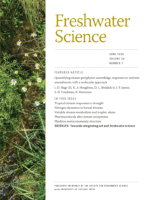
Freshwater Science
Advancing the Science of Freshwater EcosystemsFreshwater Science is a pivotal journal published by the University of Chicago Press, dedicated to advancing the understanding of freshwater ecosystems and their biodiversity. With an ISSN of 2161-9549 and an E-ISSN of 2161-9565, this journal has been a vital resource in the fields of Aquatic Science and Ecology, consistently ranked in the Q2 quartile across multiple categories in 2023. The journal encapsulates rigorous research and innovative studies aimed at addressing the ecological dynamics of freshwater environments from 2012 to 2024. Researchers and practitioners benefit from its open access options, which enhance the dissemination of knowledge while contributing to a better understanding of aquatic systems. With Scopus rankings that place it in the top 30% of its fields, Freshwater Science plays an influential role in fostering scientific dialogue and collaboration among professionals, making it an essential publication for anyone invested in freshwater conservation, management, and ecological impact.